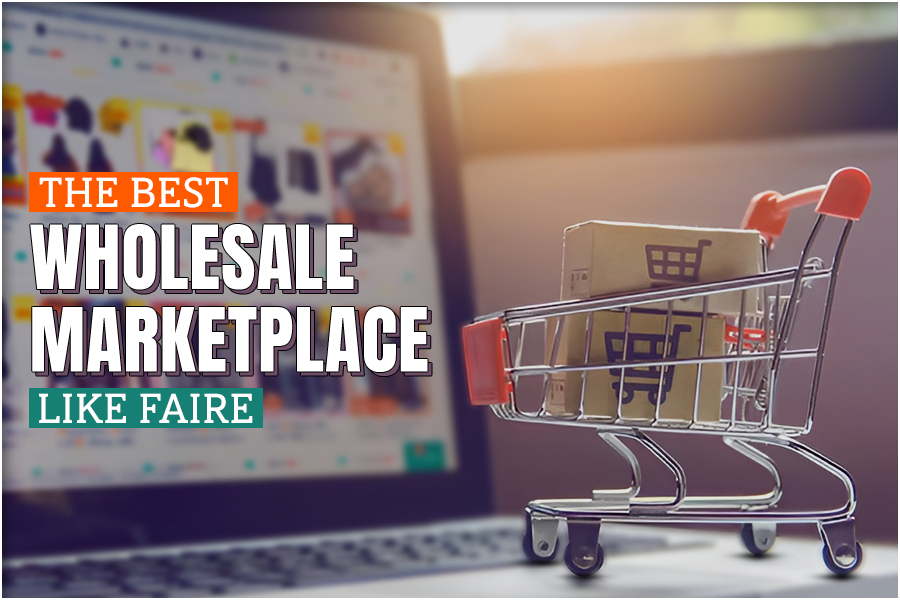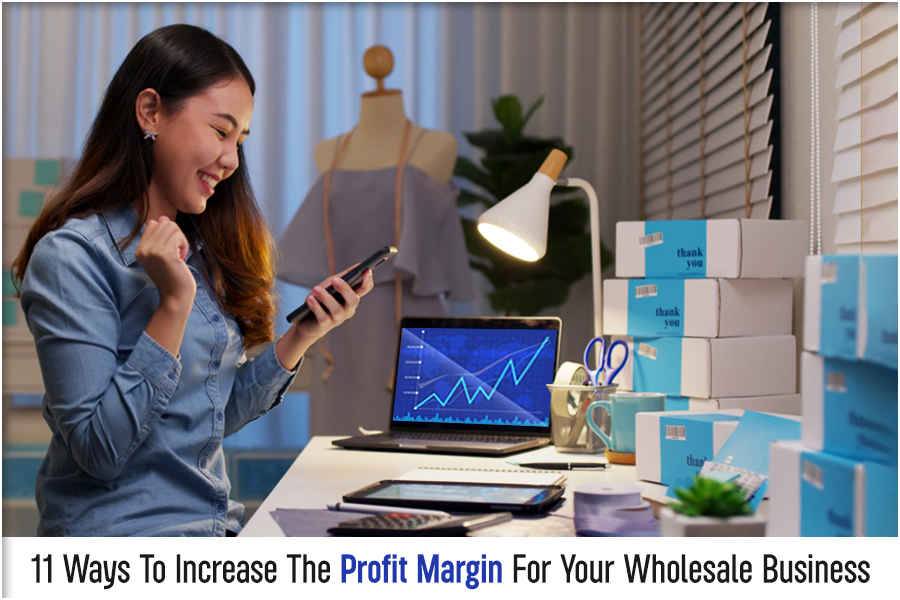People think marketing strategies are not worth it. Well, that is not the case. These tactics are vital tools for businesses at every phase. Many companies use different marketing plans to turn a few tables or launch their new business.
In the dynamic marketing world, finding cost-effective marketing strategies is like discovering hidden treasures. It might be difficult for some to understand them, but not impossible.
Did you know? 75% of marketing strategists have improved their company’s trust and credibility with effective and affordable marketing tactics.
In this blog, we will reveal the goldmine- the top 21 cost-effective marketing strategies that would set your business on the path to success.
Whether you are a startup or an established company, these strategies will be your secret weapon.
Get ready to read about cost effective marketing strategies and notice a sea of change!
What is a Marketing Strategy?
Marketing strategies are a business’s overall game plan to reach prospective consumers and convert them into buyers. It can be for any product or service sold online or offline. A marketing strategy often contains the value proposition of the company, data on the target audience demographic, brand messaging, and other elements.
A detailed marketing tactic covers something called the “Four Ps”. What are the four Ps you ask? They are Product, Place, Price, and Promotion.
A proper marketing strategy communicates with the consumers about the company’s vision, motto, and what it stands for. It also includes how it operates and why consumers deserve the business.
For example, Walmart, a renowned discount retailer, is known for its low-price approach. Their business idea and efforts are rooted in this notion. That’s why it is doing good as a business.
21 Cost-Effective Marketing Strategies
There are various benefits of marketing strategies, but did you know about the various foolproof marketing strategies? We give you 21 best marketing strategies that work the best in today’s cutthroat world-
1. Target Audience Understanding
Do you know which demographic you want to sell your products or services? No marketing plan is adequate if you don’t know your audience. No matter how cost-effective marketing ideas you use, it will backfire. Understanding the company’s position is vital, especially compared to competitors.
Get to know about the companies and consumers to help identify a suitable marketing strategy. Try to conduct market research to find your target audience to sell the product. Make a distinctive outlook of your products or services for budget-friendly marketing solutions.
2. Google My Business optimization
Google My Business optimization is essential, especially for local businesses. It is a great free marketing tool that helps your business appear on Google Maps and in local search results.
To make your business listing rank higher in these results, you should improve your Business Profile. You first need to confirm that you own it by using your Google Business account.
3. Online Marketplace Listing
Have doubts about online marketplaces? They are digital platforms that showcase their products or services to sell to their target audience. A lot of potential customers visit such places, making it a helpful avenue indeed. It is a convenient tool with reduced marketing efforts.
Online marketplaces have a wider reach. For example, if you list your services or products on websites like Main Street Market and Gifts or Etsy, you will gain further access to your customer base. It is considered a trusted platform and is one of the best affordable marketing strategies.
4. Social Media Marketing
We all are well-versed in social media these days. Everyone is creating content to share on social media platforms like Instagram, Twitter, TikTok, or Facebook. Your brand becomes more visible when using such platforms.
For your business, you can start by establishing which platform has your target customer base. What do they use the most? Instagram or Pinterest?
Based on this research, make a company profile for every platform. You must engage the audience through comments, tags, hashtags, likes, etc. It is the only way to create lasting connections on social media, making it cost-effective and successful. It is a flexible strategy with better data insights in the platform.
5. Blogging
Writing a blog is not as easy as you think, but it does wonders as an effective marketing strategy. One of the most straightforward ways to increase website traffic is through maintaining a blog.
Google’s search algorithms favor websites that are frequently updated and offer valuable, relevant content to their users. A consistently updated blog fulfills both of these criteria.
According to studies, websites that publish approximately 16 blog posts per month experience a 3.5 times increase in web traffic. It is much higher compared to websites that publish fewer blog posts.
High-quality blogs are the way to get engagement with your website. It leads to enhanced brand exposure.
6. Traditional Marketing
Face-to-face interaction, print ads, or the roll-out of flyers and brochures these marketing activities matter even today.
Assuming people will step out of their homes sooner or later, they will get attracted to the traditional marketing sights.
You can also design a creative business card. It works! Keep an eye on people who have special skills and ask if they can help you in any way to market your business. There is also a lot of room for invention in guerilla marketing. Try this one along with online marketing methods.
7. Content marketing
Have you heard people say content is king? It is true. We have seen many businesses thrive because of content sharing. Content marketing could be anything- video content, audio content, written or other media content. It can help marketing campaigns phenomenally for any business.
You may be amazed to know that roughly 69% of B2B businesses use content marketing and blogging as a marketing strategy. It is a simple approach.
Infographics, podcasts, and how-to videos are part of content marketing. They can boost your brand’s reputation and bring more visitors to your website.
Experienced videos for YouTube can be costly. But it’s acceptable to create your videos or hire an aspiring filmmaker.
8. SEO Optimization
SEO, short for Search Engine Optimization, is a pivotal tool for enhancing online visibility. This process involves boosting your website’s ranking on search engines like Google. Through this, you make it easier for potential customers to discover your site.
It’s vital to include keywords and phrases with high search volumes in your website’s content for proper optimization. Furthermore, don’t overlook the technical aspects of SEO, ensuring your website is technically proficient in its search engine performance.
It is a budget-friendly marketing tactic that would work guarantee work well.
9. Pay-Per-Click
Pay-per-click (PPC) advertising is a powerful and cost-effective marketing idea. It offers businesses a flexible way to reach their target audience and maximize their return on investment (ROI).
It is a perfect tactic because you have full control over your budget. You can set the maximum amount for each click you want to pay. PPC is a great approach for those with tight budgets. These are targeted advertising options with immediate results. There is zero upfront cost, just paying someone who clicks on the ad. It means you don’t waste money.
The brand visibility is vast through PPC, giving you an edge over competitors.
10. Strategic Email Marketing
Everyone has an email address today. Most of the population wouldn’t function without an email account since every product or service has a link to the internet. Therefore, email marketing is a powerful marketing idea for small businesses.
If you want to make the emails less spammy, try to have valuable content that appeals to the public instantly. You can send newsletters every week on behalf of your business to the subscribers on behalf of the company. There is also an option of tailoring the emails according to the customers.
You can provide a special incentive for new subscribers with a coupon code or a free eBook. It will encourage them a lot. This one is one of the best affordable marketing strategies. Try it soon.
11. Infographics
Do you know what’s instantly attractive? A powerful marketing tool like Infographics. It is an absolute visual treat if executed carefully. The colors and easy-to-understand pictures do it all. They drive the referral traffic and links.
Now, if you hire a professional designer to create a top-notch infographic, it can be expensive. But you can create your own without spending much using free tools like Adobe’s free vector kits, Canva, or our favorite, Visme.
These tools have everything you need to make a funky and shareable infographic.
12. Video Marketing
Videos are a great way to attract the attention of the audience. It is said that a human’s brain has better visual memory. So video marketing strategy would be good.
Videos are like superstars in your marketing. You can make them yourself or get experts to do it for you. Either way, they are fantastic for grabbing your audience’s attention and making your brand more well-known.
Help your business grow without spending too much money. Try different things and see which ones work best for your company and make your customers like what you do.
13. Employees as Brand Ambassadors
For many small businesses, the best way to boost sales is when people talk positively about your products or services. Research tells us that when customers hear good things from others, especially friends and family, they are more likely to buy.
You can make this happen by treating your employees well and encouraging them to advocate for your brand. Your employees genuinely care about your business, so why not use their voices and social networks to reach more people
14. LinkedIn Marketing
LinkedIn is a social media platform where users, companies, and professionals can connect to boost their views and profile. It currently has more than 700 million members. It is a powerful tool to raise a business profile if you use it correctly.
It builds connections, generates leads, creates brand awareness, and builds impressive relationships. You could use it for better website traffic, credibility, and content sharing.
LinkedIn marketing can significantly benefit businesses within the professional community. It’s a valuable tool for achieving business goals and expanding your reach in the professional world. Try this low-budget marketing tactic and see the difference.
15. Facebook Campaigns
Even if you’re working with a limited advertising budget, Facebook campaigns can be a great option. The cost per click for Facebook ads is often quite affordable.
Facebook ads are cost-effective marketing ideas and are still substantial for the audience. Facebook ads allow precise targets based on behaviors, interests, and demographics.
Since millions of people use Facebook, it will appeal to a wide and diverse audience, leading to brand exposure. You can have Facebook ads designed professionally to encourage user engagement, such as likes, shares, and comments. Use this value-for-money marketing strategy and see the difference.
16. Customer Referrals
We have seen many companies use customers in small marketing actions. So why not use it to your benefit? Create something that lets customers take the marketing initiative. For example, buying products or using services and referring them to close friends or family. Referrals work greatly.
Offer some discounts or subscriptions in exchange for referring a new person. You can also offer cashback. It is impressive marketing for small budgets.
17. Local Events or Contests
Many individuals find contests or local events as cheap marketing tactics. But we say it is a fantastic strategy to market your product or service.
They engage the community, create buzz, and showcase your product or service in a fun and interactive way. These initiatives draw local attention, promote brand loyalty, and produce positive word-of-mouth.
You can build lasting relationships and boost your business’s visibility through this marketing idea. So, don’t underestimate the power of local events and contests as effective tools to promote your offerings.
18. Press Release
Press releases, while seen as traditional, are incredibly effective in today’s digital age. They offer a cost-effective way to spread the word about your business. Building relationships with press contacts takes time.
Press releases share important updates with the industry, such as new products, awards, or structural changes.
However, the more you persist, the more attention your announcements will receive, delivering better results for your business.
19. Repurpose Content
Repurposing or recycling content is something that you could try easily. It is an affordable marketing strategy that involves reusing the existing work and turning it into a fresh piece of work. You could convert an old blog into small social media posts or use old photos from Instagram in an advertisement.
Repurposing content works well if you want to appeal to new audiences unfamiliar with the pre-existing content. You could repurpose content from various sources and amplify it across several channels.
For instance, take PPC campaigns, Facebook ads, and organic social media sharing. See what drives traffic the most on landing pages, websites, etc. In this way, you’ll know what resonates with the different audience segments.
20. Industry Networking Events
Attending events related to your industry would be a wise idea. We think that it creates a better and more cost-effective marketing option. Often, some startups create brand recognition via word-of-mouth advertisement.
Taking part in local events or sponsoring lets you spread the word about the business and create strong connections. Companies have often sponsored events on college campuses, so students learn more about the new brand or product. For instance, businesses may rent stalls during festive seasons in such areas.
All of this will lead to networking, which is much required, especially for new businesses. It can boost your business goals, like knowing about co-marketing prospects with other brands sharing the same value.
21. Give Freebies
Want to get an instant likeness for your brand or product? Try the freebie marketing technique. We think it is a great way to let your audience know about your product. It raises awareness among people and boosts sales.
For example, for customers shopping in a mall, there are items that you may give passersby for free. If it’s a food product, let them taste it for free. Typically, the majority of companies work their way through complementary products.
The goal of giving freebies is to encourage people to buy the product. Give them great deals and see the change in your sales.
These were some of the budget-friendly promotion methods that will have positive outcomes. Try implementing them correctly with the help of a professional marketing strategist. You will know what we mean.
Budget and Implementation Of Marketing Strategies
In our experience, companies face most issues during budgeting and implementation of the strategy. Since some do not get the right guidance for the whole marketing process, they remain at a loss. Let’s see what you should consider in these areas-
The Budgeting
The marketing budget and return on investment go together. Be aware of your capital and how you use it. Without a good budget plan, you may find yourself not being able to pay back certain costs for the company. It could also harm the image among customers if products are not fulfilled properly. Poor budgets create damage for everyone connected to the company.
Research the following area to establish a budget for cost effective marketing strategies-
- Competitor analysis
- Industry and market research
- Performance records of Internet marketing
- Market Auditing
What should you include in a marketing budget?
The budget should include prices that you expect to pay for every ad campaign you create-
- Website development, maintenance, and SEO
- Printed items and product materials
- Energy and time in creating a campaign
- The marketing strategy- display ads, content marketing, email marketing, PPC banners, Social media marketing, etc.
Eventually, a marketing budget doesn’t have a one-size-fits-all formula. It varies a lot from industry and business size. Know exactly what and who you are selling, so that you implement it effectively.
Marketing Implementation Process
A marketing implementation plan serves as a strategic blueprint for businesses. It effectively structures, monitors, and carries out marketing initiatives within a specified timeframe.
Creating a marketing implementation plan is crucial for turning your marketing strategy into actionable steps. If you want to know how to seamlessly put your marketing strategy into action, we can help-
Practical goals
Before implementing any marketing strategy, it’s essential to set clear and achievable goals. These goals should be specific, measurable, attainable, relevant, and time-bound (SMART).
For example, if you’re running a social media campaign, a SMART goal might be to increase Instagram followers by 20% within three months. You could achieve this by posting daily and engaging with the audience.
Know Your Implementations
Identify the resources, tools, and assets required for your marketing initiatives. It includes budget allocation, technology, personnel, and creative assets.
For instance, if you’re planning an email marketing campaign, you need a few things to implement. It would be email marketing software, a list of subscribers, well-designed email templates, and content for your emails.
Hence, know what you need for your strategy thoroughly to implement it well.
Review the Marketing Strategy
Reviewing is an essential part of implementing a strategy. Ensure that your implementation aligns with your overall affordable marketing strategy. Regularly reviewing and revising your strategy can help to adapt to changing market conditions.
For example, if your strategy involves content marketing, assess the performance of your content pieces regularly. You can adjust your approach based on audience engagement and analytics data.
Establish Workflows for Tasks
Organize the responsibilities and tasks of the marketing activities by having a clear workflow. Define who does what, when, and how for effective implementation. Use project management tools or software to streamline collaboration.
For instance, if you’re launching a new product, create a workflow that outlines certain things about the product. It may include development, marketing collateral creation, launch event planning, and assigning responsibilities to different team members.
When there is clarity, every task becomes easy and efficient providing colorful results.
Team Communication
One might wonder why communication is so important in implementing a marketing strategy. Effective communication is crucial for successful marketing implementation. Regularly update and align your team members with your goals, progress, and any changes in the plan.
Use meetings, project management tools, and collaboration platforms to keep everyone informed. For instance, when launching a new advertising campaign, share ad performance updates, ad spending, and adjustments with your team. It will ensure everyone is on the same page.
Measure and Track Progress
It’s important to track and measure your progress throughout the implementation phase. Keep monitoring key performance indicators (KPIs) and metrics to assess the effectiveness of your marketing activities.
For instance, in PPC campaigns, track CTR, conversion rate, and ROAS. These will give you an idea of the campaign’s success.
Potential Challenges of Marketing Strategies
There are marketing challenges that you have to look into before deciding on a strategy straightaway. Here are a few challenges your business might face when deciding on a budget-friendly marketing strategy-
Getting new customers
Is it always possible to attract customers, whether new or old? No. When choosing one or multiple marketing strategies, keep in mind that not everyone is as gullible as you think.
Acquiring new customers can be a daunting task, especially for businesses entering a competitive market. Executing a suitable marketing strategy that focuses on attracting consumers would be nice. Think of it as an ineffective return on investment if you don’t get new customers.
Training the Team
It isn’t always that your employees will understand what to do on such occasions. A well-trained team is crucial to have a successful marketing strategy.
The team members must be trained to use social media analytics tools or know the process of the company’s marketing strategy to help in every step.
Training the team may take some time, but you have to do it as much as you can to gain positive outcomes from the affordable marketing tactics.
Staying Updated with Global Changes
Whether you are marketing on a budget or not, knowing about global changes is crucial. If you don’t know about the current trends, you won’t be able to make an appealing marketing strategy.
Cost-effective marketing ideas need to align with global trends, regulations, and market shifts. It can significantly impact marketing strategies.
An example is the General Data Protection Regulation (GDPR) in the European Union. They forced companies to adapt their data collection and privacy practices.
Brand Expansion in Other Countries
Every business aspires to expand and touch international soil. You must have thought of it too. Expanding a brand into new countries can be complex under affordable marketing strategies.
One has to research and analyze the foreign country’s taste and modify the brand advertising campaign accordingly.
For instance, when Starbucks expanded into China, it made lots of changes. It had to adjust its menu, store designs, and marketing strategies to cater to local preferences and cultural nuances.
Budgeting
Businesses are all about money and how they utilize it further. No one knows it better than us! Budget constraints can limit the scope and effectiveness of marketing campaigns.
A small startup, for instance, may not have the budget to run nationwide television advertising campaigns and might need to rely on more cost-effective online marketing channels.
Lack of Resources
Resources are required in every step of marketing strategies. Falling short of it? We think you better wait and execute the plans later.
Inadequate resources, whether in terms of personnel or technology, can hinder marketing efforts. For instance, a nonprofit organization struggles to conduct sophisticated digital marketing campaigns. It was due to a shortage of skilled personnel and limited access to the necessary tools. This poses a negative impact on their plans.
Database Management
Effective customer database management is vital for personalized marketing. If a retail company fails to maintain an accurate and up-to-date customer database there will be consequences. For instance, it may send irrelevant offers to its customers, leading to disengagement.
Standing Out
We believe the competition has become very aggressive in the past few years, especially due to swift technological upgrades. It has made it difficult for brands to stand out. Now that AI has come in, it would be massively hard for new brands to penetrate and become one of a kind.
Differentiating your brand and standing out from competitors can be challenging. For example, in the smartphone industry, companies like Apple and Samsung invest heavily in product design and marketing to distinguish themselves.
Dilution of The Message
Sometimes, to create a fantastic marketing strategy, the companies lose the original message. Brand dilution is where brands sometimes stretch out too much, creating inferior services or products that taint the image and name of the company.
One famous example is when Cadbury launched Smash, a mashed potato product. It sold well but at the expense of Cadbury’s overreaching reputation as the best chocolate brand.
Usually, dilution occurs when companies penetrate new industries or markets, not selling well.
Ensuring that your marketing message remains consistent and coherent across various channels and campaigns can be a struggle. For instance, if a fashion brand runs a campaign emphasizing sustainability while simultaneously promoting fast fashion, it may dilute the message and confuse consumers.
Elevating Your Business In Phenomenal Ways
Now that you know about the various affordable marketing strategies, we think you should research well and execute a suitable one. Marketing strategies should be such that they increase the profit margin for wholesale businesses or any other business type.
Main Street Market and Gifts is a platform for your wholesale or retail business if you want your brand to be seen and increase revenue. We remain your steadfast ally no matter what. We provide cost effective marketing strategies, pricing ideas, supplier partnerships, targeted marketing, and more.
Let us be the medium for your business’s success in a minimum time.





